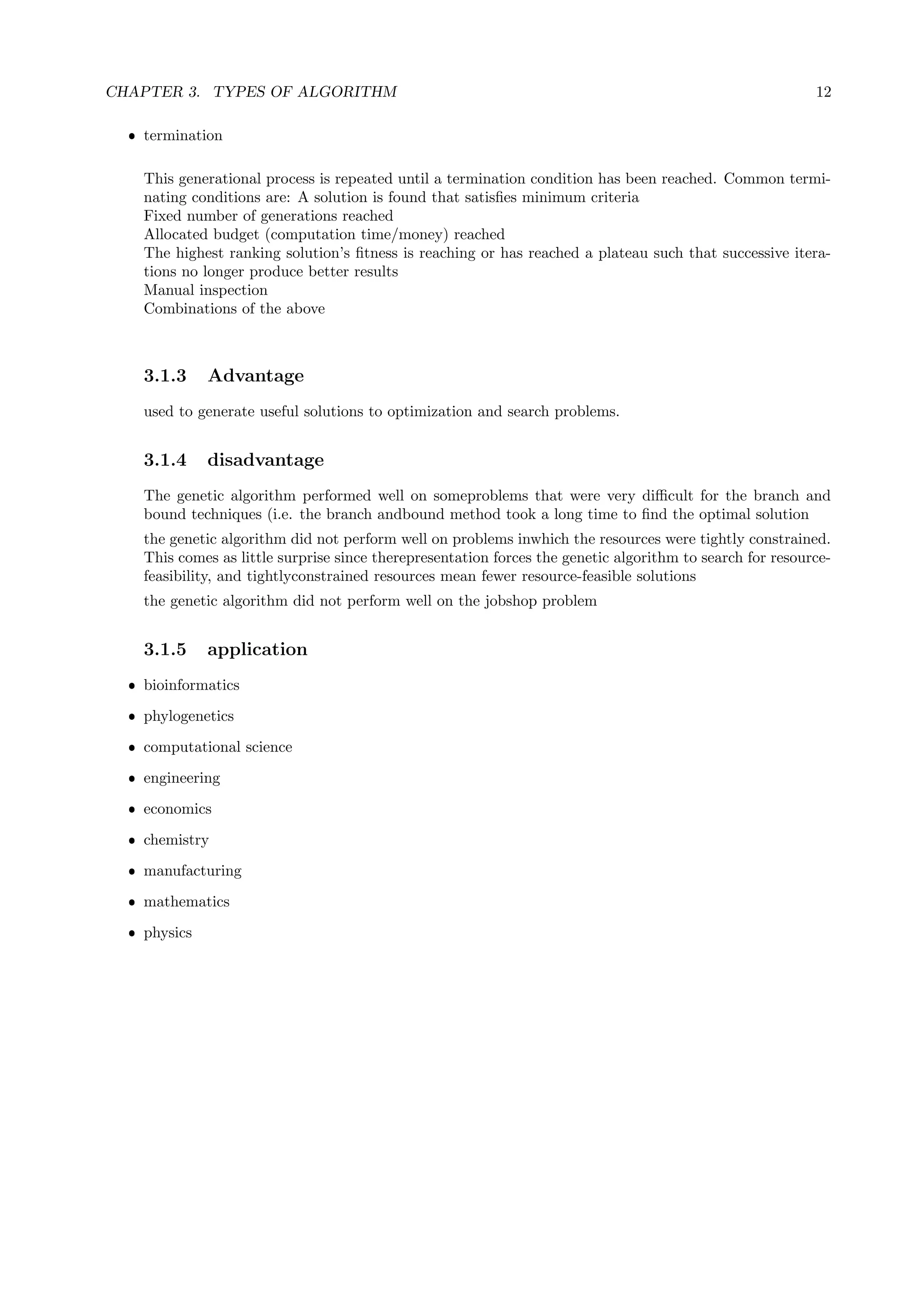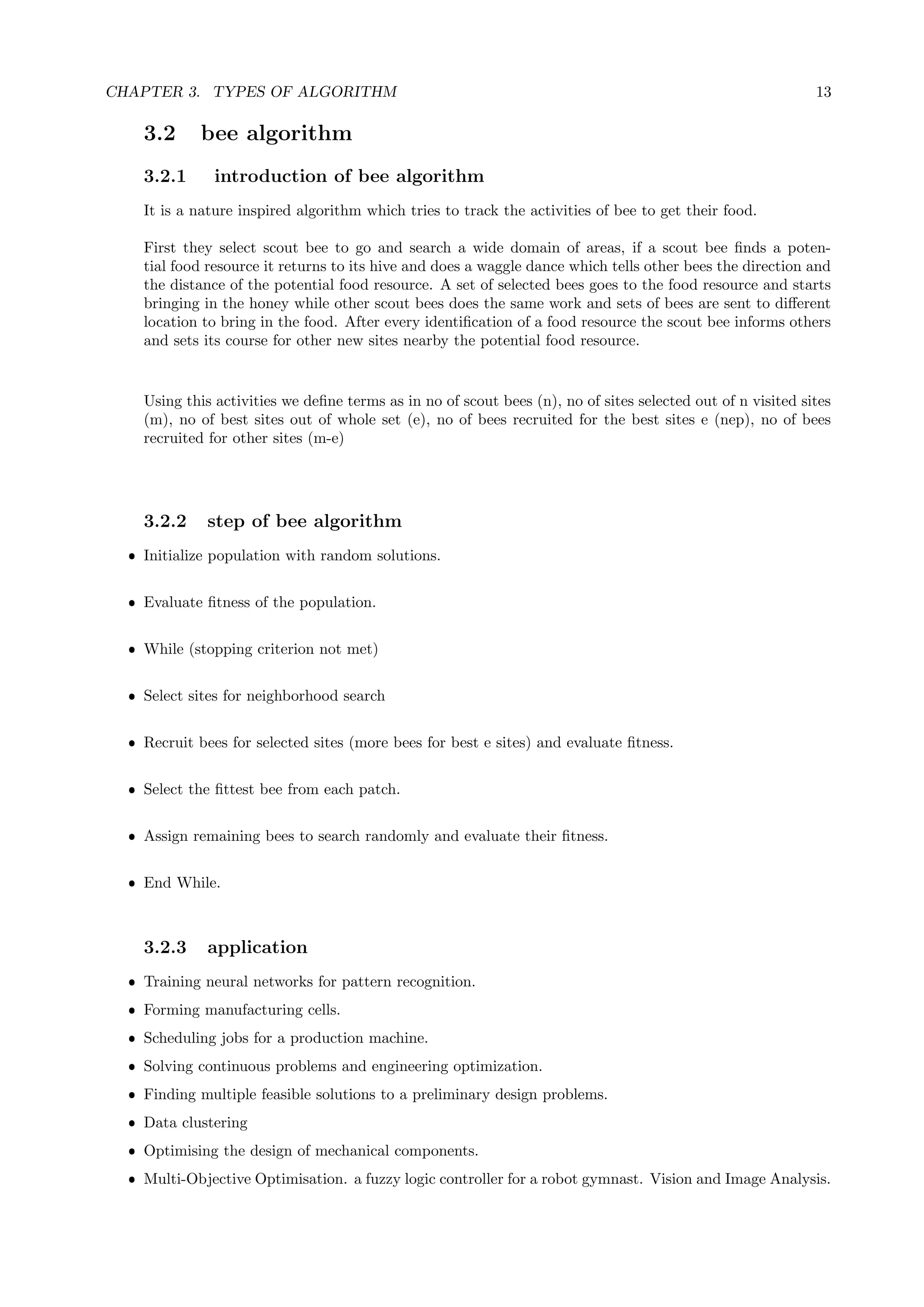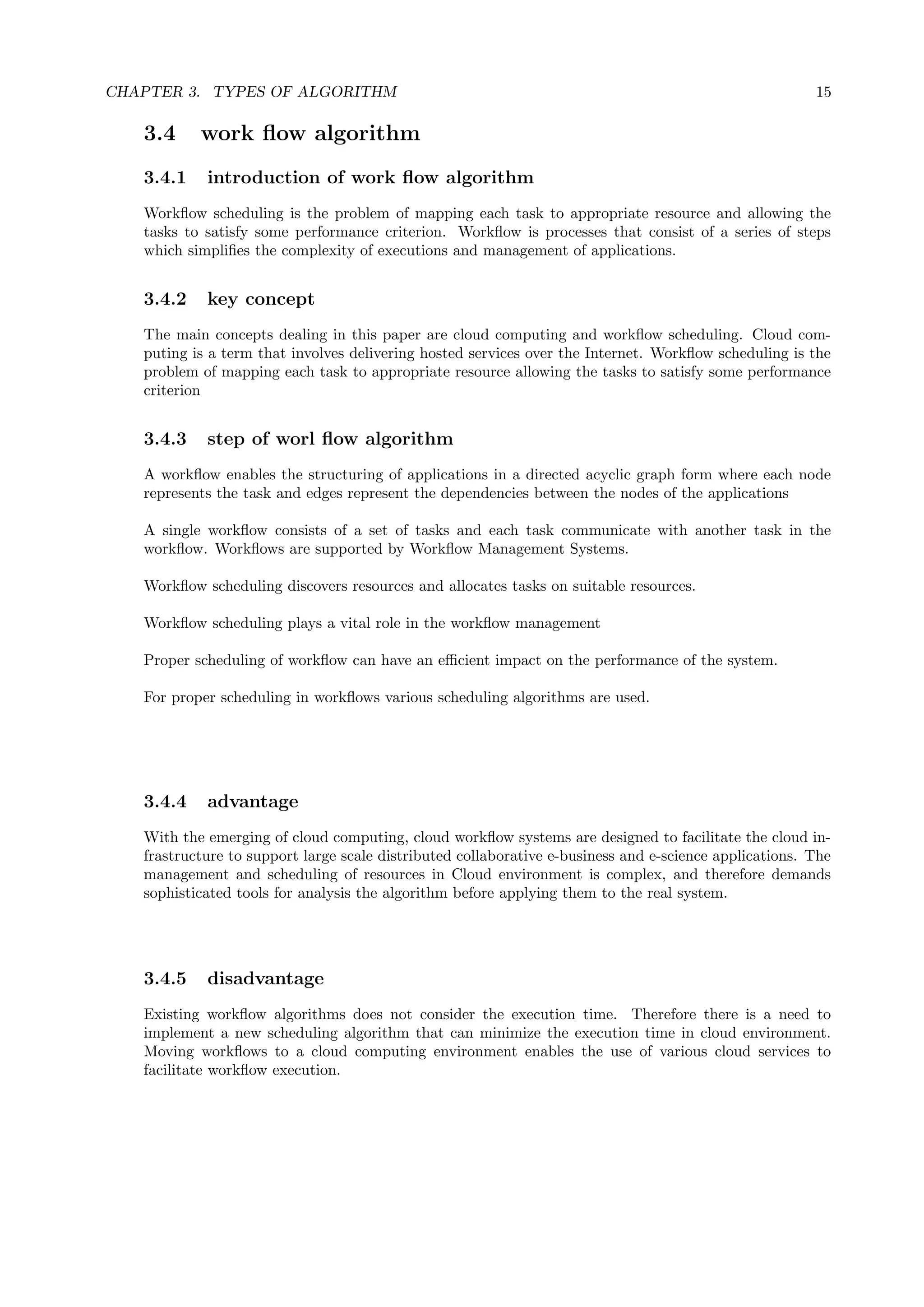This document provides a summary of a student's seminar paper on resource scheduling algorithms. The paper discusses the need for resource scheduling algorithms in cloud computing environments. It then describes several types of algorithms commonly used for resource scheduling, including genetic algorithms, bee algorithms, ant colony algorithms, workflow algorithms, and load balancing algorithms. For each algorithm type, it provides a brief introduction, overview of the basic steps or concepts, and some examples of applications where the algorithm has been used. The paper was submitted by a student named Shilpa Damor to fulfill requirements for a degree in information technology.
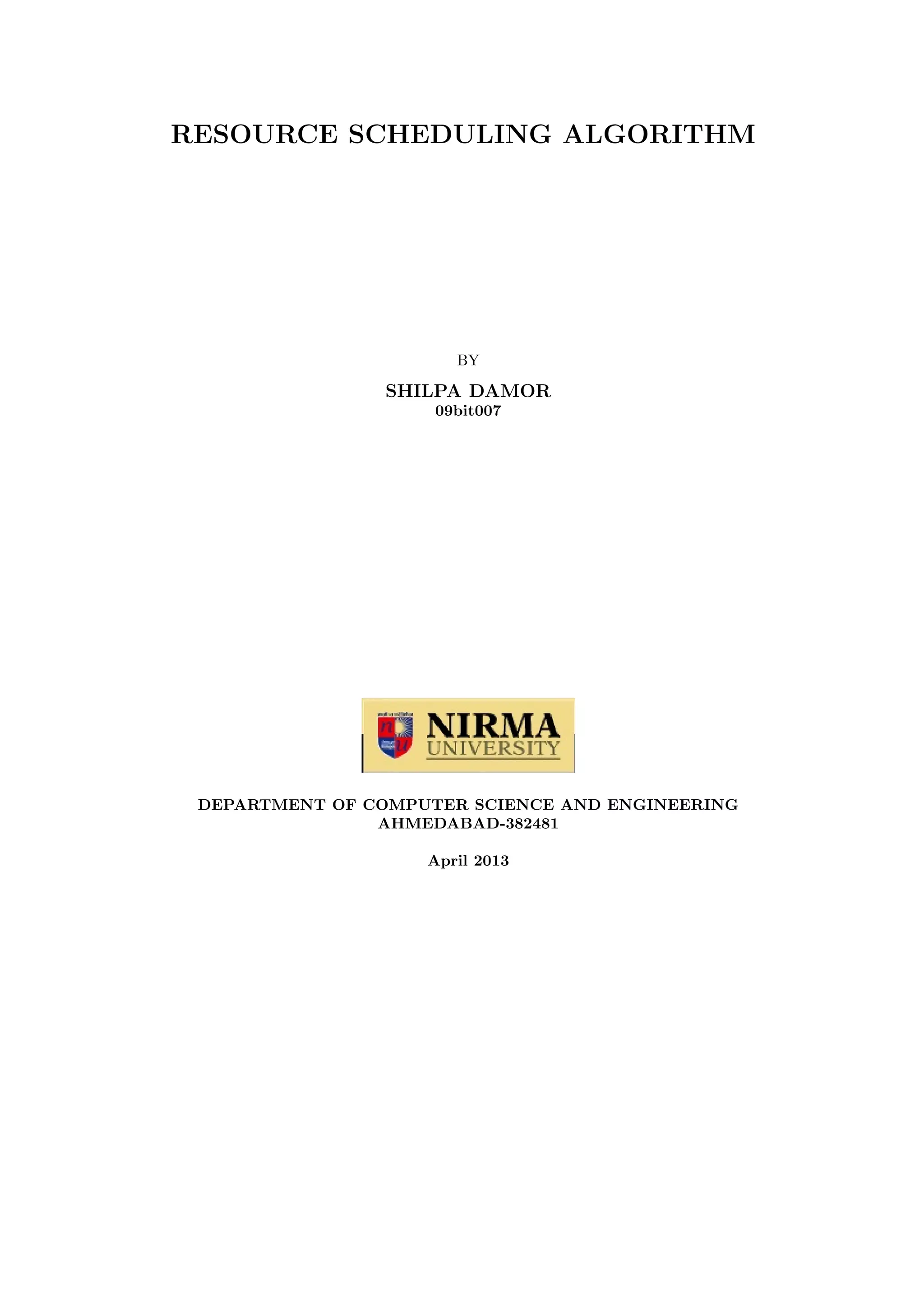
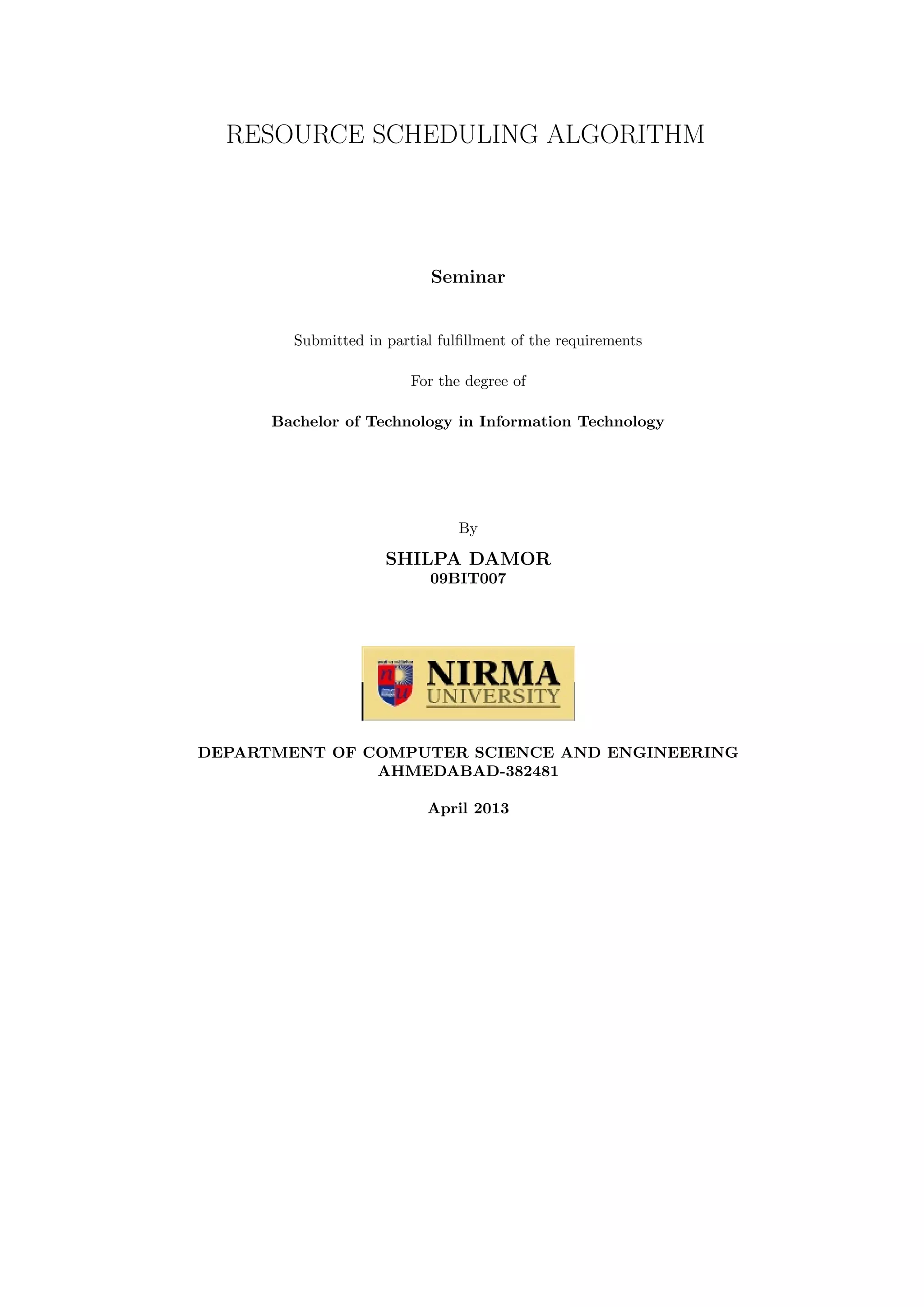
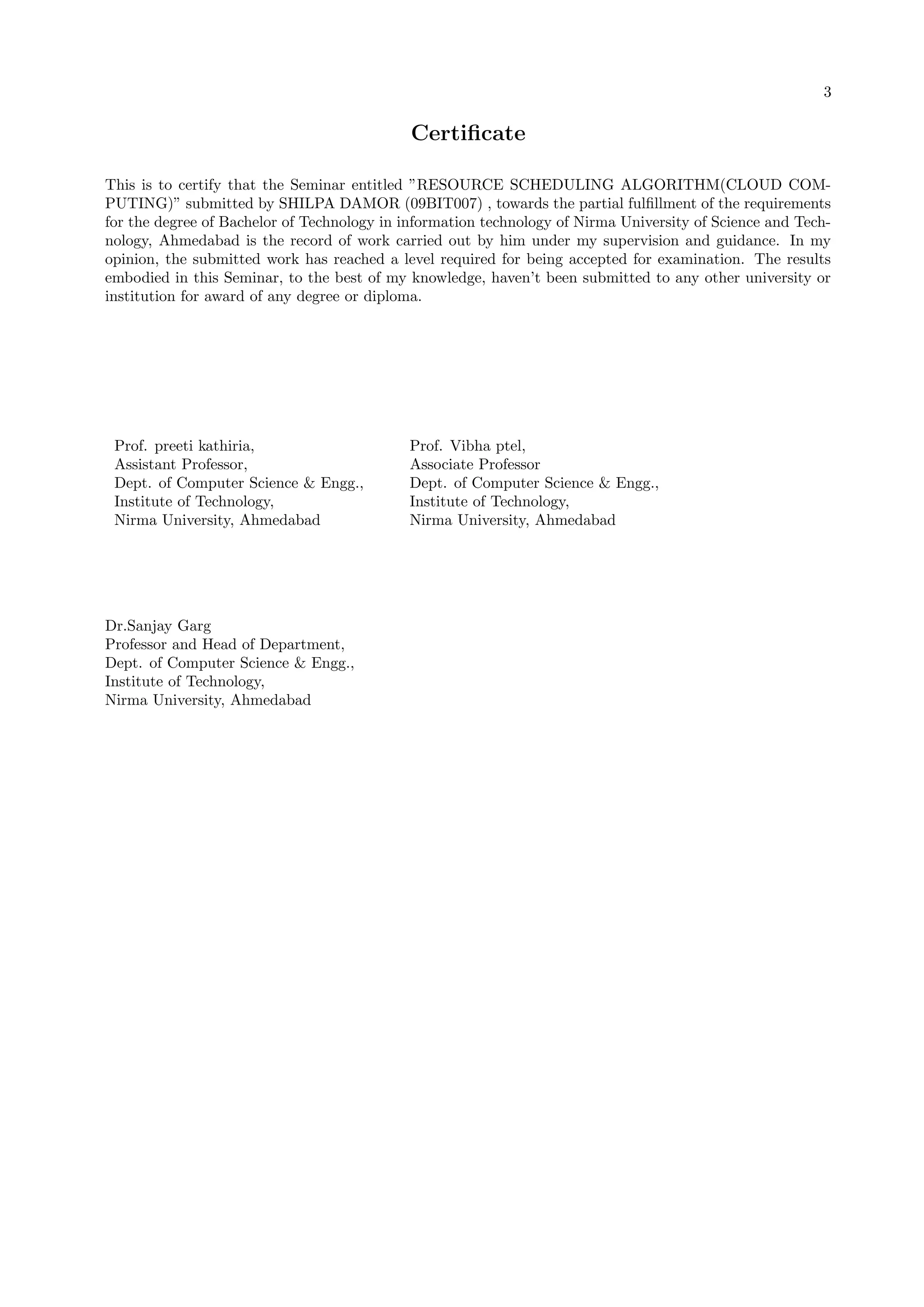





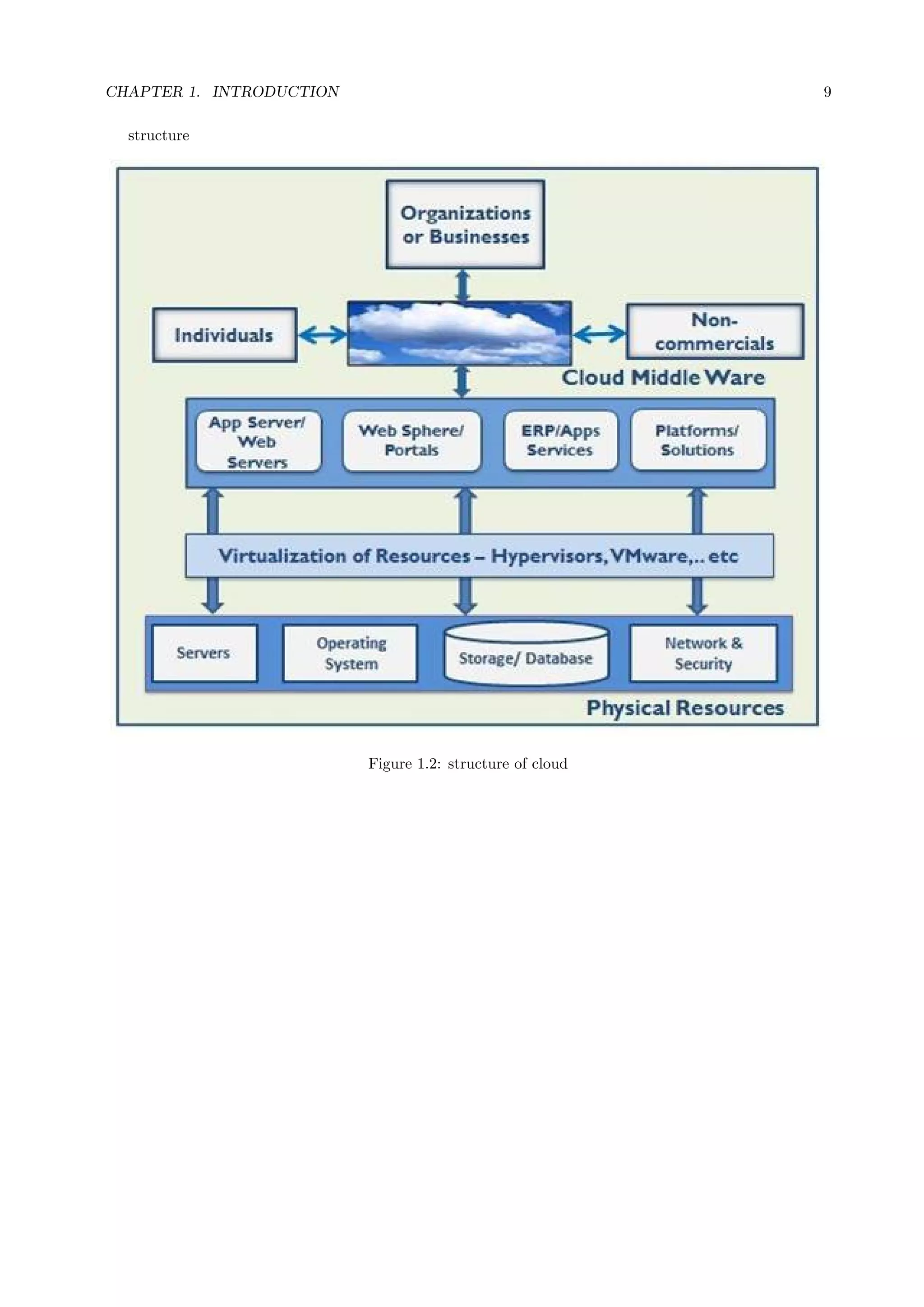
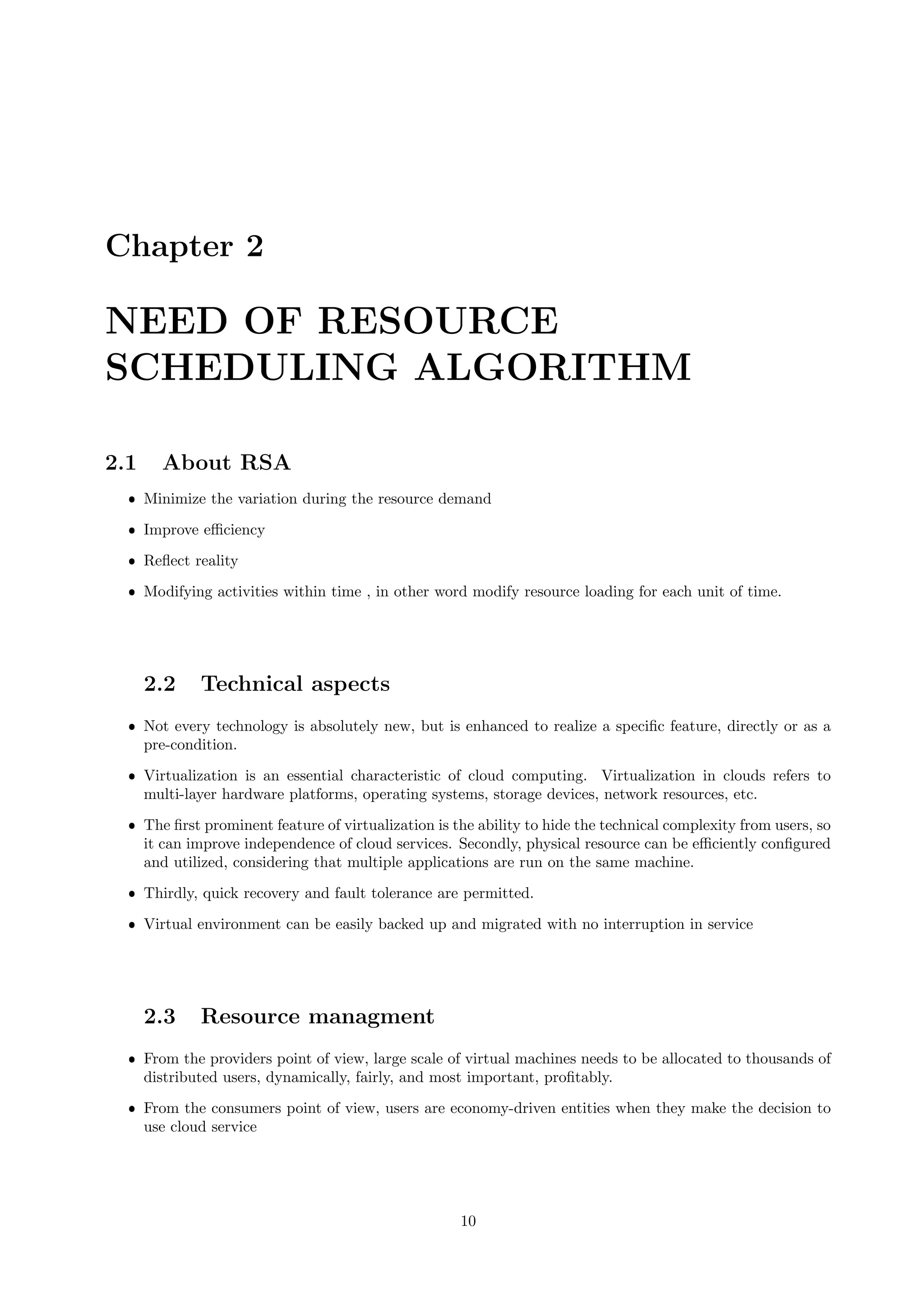
![Chapter 3 Types of algorithm ˆ genetic algorithm ˆ bee algorithm ˆ ant colony algorithm ˆ work flow algorithm ˆ load balance algorithm 3.1 genetic algorithm 3.1.1 introduction of genetic algorithm ˆ This work describes a genetic algorithm approach to resource-constrained scheduling using a direct, time-based representation ˆ This document describes a genetic algorithm for finding optimal solutions to dynamic resource-constrained scheduling problems. ˆ the genetic algorithm was applied to over 1000 small job shop and project scheduling problems (10-300 activities, 3-10 resource types).the algorithm performed fairly well on a wide variety of problems.genetic algorithms operate on a population of solutions rather than a single solution and employ heuristics such as selection, crossover, andmutation to evolve better solutions. 3.1.2 step of genetic algorithm ˆ it is necessary to encode any possible solution of the problem as population. ˆ The next step is to generate an initial population from valid chromosomes(population). ˆ During each successive generation, a proportion of the existing population is selected to breed a new generation. ˆ Genetic operators The next step is to generate a second generation population of solutions from those selected through genetic operators: crossover (also called recombination), and/or mutation. For each new solution to be produced, a pair of ”parent” solutions is selected for breeding from the pool selected previously. By producing a ”child” solution using the above methods of crossover and mutation, a new solution is created which typically shares many of the characteristics of its ”parents”. New parents are selected for each new child, and the process continues until a new population of solutions of appropriate size is generated. Although reproduction methods that are based on the use of two parents are more ”biology inspired”, some research[3][4] suggests that more than two ”parents” generate higher quality chromosomes. 11](https://image.slidesharecdn.com/resourceschedulingalgorithm-130429020125-phpapp02/75/Resource-scheduling-algorithm-11-2048.jpg)
